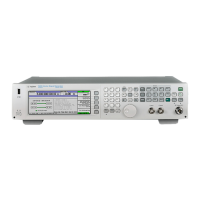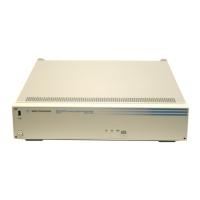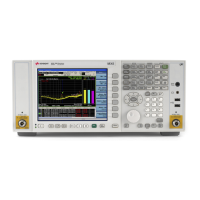72 Agilent N5181A/82A MXG Signal Generators User’s Guide
Basic Digital Operation (Option 651/652/654)
Setting the Baseband Frequency Offset
Setting the Baseband Frequency Offset
Figure 8-3 Baseband Frequency Offset Softkey
The baseband frequency offset enables you to shift the baseband frequency up to ±50 MHz within the
BBG 100 MHz signal bandwidth, depending on the signal generator’s baseband generator option.
Common uses for the offset feature include:
• offsetting the carrier from any LO feedthrough (carrier signal spur at the carrier frequency)
• sum the baseband signal with external I and Q inputs to create a multicarrier signal
• use the signal generator’s I/Q signal as an IF
NOTE Changing the baseband frequency offset may cause a DAC over range condition that
generates error 628, Baseband Generator DAC over range. When this occurs, reduce the
waveform runtime scaling value (page 114).
The baseband frequency offset value is one of the file header parameters (page 78), which means you
can store this value with the waveform. When you select a waveform with a stored frequency offset
value, the signal generator changes the current value to match the stored file header value. If there
is no stored baseband offset frequency value for the current waveform, the signal generator uses the
last set frequency offset value.
You can also use the Save function (page 35) to store this value as part of the signal generator setup.
When you Recall a setup stored with the Save function, the baseband frequency offset value becomes
the current instrument setting value, disregarding the stored file header value.
See page 130
See page 114
Frequency offset setting.
The settings in this menu
can be stored to the file
header, see page 78.
For details on each key, use key hel
as described on page 23.

